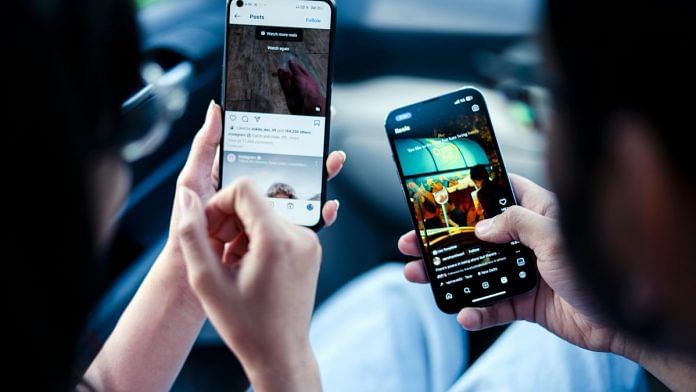Now, Instagram has taken it ten steps too far into dangerous territory. We are way past that slippery slope.
Instagram’s Blend creates a shared Reels feed with friends within DMs. It combines recommendations for you and your friends or partners, making sharing and watching reels together—allegedly—more engaging.
It’s based on invitation, but why would users be interested in blending their explore pages with anyone be it their BBFs or partners. There is something called TMI or too much information. All I hear is break-ups, ‘break-ups’ and more ‘break-ups.
Blend, desperately, wants to foster deeper connections. But in reality, it bulldozes through the flimsy boundaries we have built on social media.
What’s next? Instagram stepping into our bedrooms?
I don’t share the same reels with all my friends. Some get the memes, others get the moods, and a few the occasional romantic quote. That’s what makes Instagram manageable.
But with Blend, those lines blur. My timeline is in danger of becoming a jigsaw puzzle of shared preferences, mutual posts, and jokes I didn’t sign up for.
And let’s not forget, the algorithm is curating the feed. Additionally, the reels on blend come with a tag: “suggested for you/suggest for ‘the other person’”— which is just embarrassing.
It feels like Instagram’s product team wondered, “People aren’t oversharing enough—how do we change that?” The only people who may appreciate this feature are the cringe, lovey-dovey, possessive girlfriends-boyfriends who live separately but want to stay in touch—read, keep tabs on—even in their doomscrolling-time.
One of the most underrated aspects of social media is the intent behind the content we share. If I’m scrolling through Instagram, and I come across a meme or a reel that reminds me of a specific friend, I’ll send it to them. It could be an inside joke or a nugget of gossip, an outfit for the next event, or something we both love to mock.
It’s not just about the content. When we share, it’s a way of saying, “Hey, this made me think of you.” This keeps people connected. It’s intentional. But Instagram’s Blend walks all over that moment of personal thought. Their generated timeline turns a thoughtful action into an algorithmic push.
Now, instead of choosing to share something because I thought of my friend, Blend tries to do the thinking for me. And, that’s precisely where it loses its soul and—my interest.
If Meta had taken a look at current youth behavior, they’d know that the pendulum is swinging the other way.
Young people today aren’t looking for more digital glue. They’re trying to get back to their lives and draw boundaries around screen time.
But Meta, instead of taking cognisance of what consumers want, seems to be digging deeper into the trenches people are trying to escape.
(Edited by Theres Sudeep)




![Ghum Hai Kisikey Pyaar Meiin: Param Singh misses working with Vaibhavi Hankare, says ‘She has worked super hard’ [Exclusive]](https://eflip.offersdunia.in/wp-content/uploads/2025/04/ghum-hai-kisikey-pyaar-meiin-param-singh-vaibhavi-hankare-1-1-150x150.jpg)



